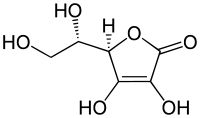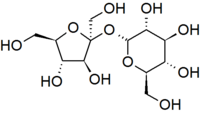Carbon Dioxide CO2
IUPAC: Carbon Dioxide
Methane CH4
IUPAC: Methane
Hydronium H3O+
Hydrogen Sulfide H2S
IUPAC: Hydrogen Sulfide
Aluminum Fluoride ALF3
IUPAC: Aluminum Fluoride
2. Post an image from the web, the chemical systematic (IUPAC) name, common name, and the molecule formula for 20 chemicals that you use or eat. Explore the ingredients of things like cosmetics and foods.
Ibuprofen-- propanoic acid

Toothpaste— Xylitol--Pentane-1,2,3,4,5-pentol

Water— contains oxidane H2O

Maltodextrin—potato chips commonly have this

Orange Juice- Citric Acid

Orange Juice- Ascorbic Acid

Corn- DIMBOA (2,4-dihydroxy-7-methoxy-1, 4-benzoxazin-3-one)

Mello Yello- Tartrazine Trisodium (4E)-5-oxo-1-(4-sulfonatophenyl)-4-[(4-sulfonatophenyl)hydrazono]-3-pyrazolecarboxylate other names: FD&C Yellow 5

Coca-Cola—Phosphoric Acid trihydroxidooxidophosphorus phosphoric acid. Other names: Orthophosphoric acid. H3PO4

Apple Juice—Vitamin C--L-Ascorbic Acid—(5R)-[(1S)-1,2-dihydroxethyl]-3,4-dihydroxyfuran-2 (5H)-one

Butanoic acid—commonly found in butter—other names: Butyric acid

Gum—Contains Sorbitol—(2S, 3R, 4R, 5R)-Hexane-1,2,3,4,5,6-hexol

Gum—Aspartame. Also found in Soda and other products.— N-(L-α-Aspartyl)-L-phenylalanine,
1-methyl ester

Coffee—Caffeine-- 1,3,7-trimethyl-1H-purine-2,6(3H,7H)-dione
3,7-dihydro-1,3,7-trimethyl-1H-purine-2,6-dione Other Names: 1,3,7-trimethylxanthine, trimethylxanthine, methyltheobromine, 7-methyltheophylline, mateine

Milk-Lactose-- β-D-galactopyranosyl-(1→4)-D-glucose—other names: milk sugar

Glucose—Used in donuts—D-glucose—other names: Dextrose, Corn Sugar

Fructose—Soda—other names: fruit sugar

Sucrose—cookie—other names: sugar

Carbohydrates-- can be found in many foods such as spaghetti--

Tryptophan—commonly found in turkey-- Tryptophan or (2S)-2-amino-3-(1H-indol-3-yl)propanoic acid

3. Look over your molecules and the bonding characteristics, how many bonds does each of the following elements typically have? Carbon? Hydrogen? Oxygen?
Carbon- 4
Hydrogen- 1
Oxygen- 2
4. What does IUPAC stand for?
International Union of Pure and Applied Chemistry
5. As you explore ingredients, notice how everything around us is made up of chemicals consisting of atoms bound together into molecules. But what about companies that claim their products are chemical free! How can this be? Here is an example:
http://www.naturalhealthcareproducts.com/Cleaning-Products.php
Do a little web searching and propose what chemicals are actually in this product.
The ingredients in the product are natural and are already in the environment. This would make the product all natural and “chemical free.” Truly it is not chemical free, but may be natural.
No comments:
Post a Comment